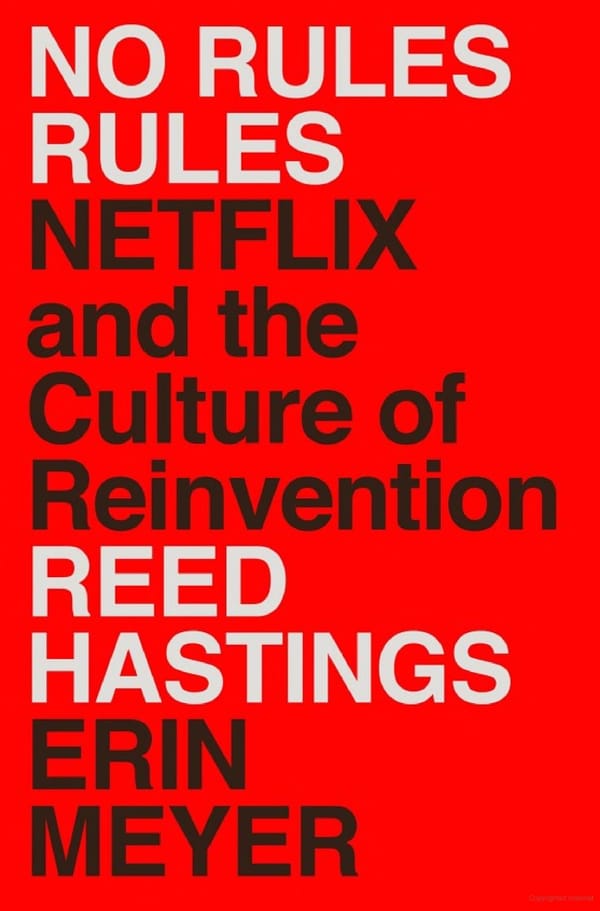Avoiding Micromanagement
No one sets out to be a micromanager. Yet we see it all the time. Here's why and what you can do to counteract it.

One size fits none
No manager sets out to be a micromanager. Yet it happens all the time. This post will cover why and what you could do about it as a manager and offer some additional resources at the end.
Why does it happen?
I’ve seen a couple of patterns where this occurs disproportionately. Often it comes with newer managers where there is some lack of trust that the team (the person on the receiving end of micromanagement) will execute flawlessly on the task assigned.
The other reason I’ve observed is around a failure to adapt from a highly successful individual contributor into that of a manager. Switching to management is best thought of as a career change, not just a role change. The necessary mindset shift does not occur, and you end up with micromanagement.
The costs are high too. It will demoralize your best performers and cause your team to lack initiative. You’ll remove the feelings of autonomy and even potentially mastery–two key elements of motivation.
What can you do?
Readers of this blog will know I’m a fan of having some kind of principles or framework. In this case I have 2 related ones. The first is Task Relevant Maturity (TRM) and the second is having high expectations of your team’s growth.
Task Relevant Maturity
Task Relevant Maturity is very similar to Situational Leadership Theory and forces you to consider: how ready is this person for this task? There is no such thing as someone who is globally at a high level of TRM. When supporting someone on your team, I think this is the most important question to ask. It sets the foundation for expectations and how you, as the manager, engage with the person on your team on that task. You’ll also need a foundation of trust so that your team can give you feedback on when you need to adjust.
A high level of TRM is someone who has (repeatedly) demonstrated mastery of the task at hand. They know what is needed well enough to teach others and can set very accurate deadlines, understand when to push back and when to charge ahead. A sign that someone has high TRM is that they consistently make good progress and do not need much support. In these cases, give as much freedom as you can.
You can assume a low level of TRM when someone is new to a role or company. In either case they will be missing some necessary context, either technically or culturally, and will need more support. If someone is falling behind, they may have low TRM. Another gauge is what questions they are asking in their 1-on-1 meetings with you. Lots of very basic, low agency questions may suggest low TRM. When someone is low TRM, you will need to be hands on. In this case it is not micromanagement. It’s responsible management. It becomes micromanagement when that help is no longer necessary or is holding back their growth.
No one will stay in a low TRM bucket indefinitely, so you will need to have some process of your own to learn when someone is showing signs of increasing TRM. To do this, you’ll need to establish trust and open communication so that you can get that feedback directly.
There is one particular trap to watch out for: the case of new managers. This is one of the most challenging career switches that many people will make. The core job of a manager is to get a team to perform at a high level. That’s a very different skill than doing that same job yourself. It is related because you will know the tips and tricks around doing good work. In this case, you are well served by assuming that the new manager’s core TRM has dropped from high to low. Your star performer who is transitioning to management will likely need a large jump in support.
You’ll notice that high TRM members of a team are able to teach. There is a great growth opportunity in pairing high and low TRM members: the high TRM person can get better at teaching others and the lower TRM person can get additional support.
High Expectations
The best performers will grow in your time with them. They’ll constantly seek new opportunities and you do not want to keep them in a high TRM role for too long. If you truly have very high expectations of your team, I believe you will find it very hard to micromanage. Designing your team with green space for everyone (not always possible, but should be an aspiration) will set this up naturally.
If you’re thinking like a multiplier, you will naturally have high expectations for each of your reports and their respective TRMs. You’ll be looking for ways to get out of the way, so you can focus on adding more value where your unique context and perspective can be the most additive.
From Making of a Manager:
“There is one quality that sets truly great managers apart from the rest: they discover what is unique about each person and then capitalize on it,” says Buckingham, the renowned management consultant who has studied hundreds of organizations and leaders. “The job of a manager . . . is to turn one person’s particular talent into performance.”
Spend your time looking for that unique talent. If you do that, you’ll naturally find yourself avoiding being overly prescriptive–how can you find out what someone is good at if you do all the steps for them? Give them a chance to surprise you on the upside!
Here are helpful resources:
- (fantastic site for managers) Are You a Micromanager? Avoid these Signs and Learn How to Stop Micromanaging
- Julie Zhuo’s Making of a Manager
- Andy Grove’s High Output Management
- Daniel Pink’s Drive
Side note: there are so many different management theories and frameworks. I do not end up citing a lot of them because I don’t think they add much to the core foundational theories. There are a lot of business schools, and business school professors. They want to publish.



